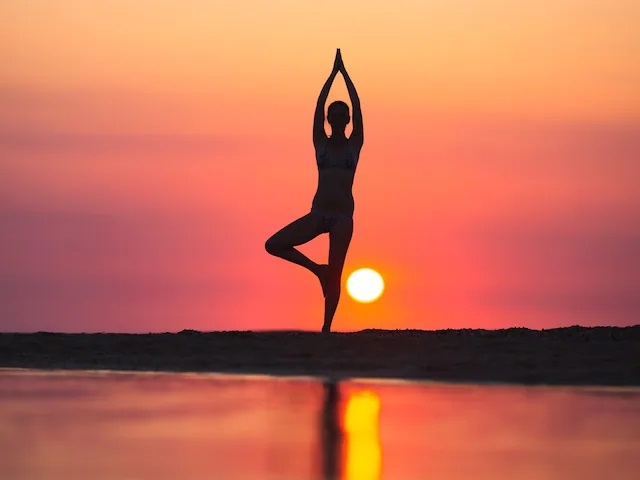PatanjalYoga Sutras -II
| Date :15-Sep-2024 |

By DR BHUSHAN KUMAR UPADHYAYA :
In the previous article the
contents of the first chapter
of PatanjalYoga Sutras
named Samadhi Pada were summarised and different psychosomatic practices were discussed
for calming down the racing
mind. The second chapter is
called the Sadhana Pada or the
chapter dealing with different
methods and means to elevate
human consciousness. The
chapter has fifty five Sutras or
aphorisms.
The chapter begins with the
description of KriyaYoga. Kriya
Yoga is the central spiritual practice found in varied forms in all
types of Yogic traditions.
According to Patanjali, Kriya
Yoga consists of penance, self
study or reflections and surrender to the Supreme (Sutra 2:1).
It is a very comprehensive code
of spiritual conduct comprising
all the three traditional methods
of Karma, Jnana and Bhakti.
Penance indicates KarmaYoga.
Self-reflections are the core principles of JnanaYoga and surrender to the Almighty is the soul of
BhaktiYoga. KriyaYoga leads to
the purest state of consciousness
by minimising all afflictions
(Sutra 2:2).
Patanjali has enumerated five
types of afflictions, ignorance,
ego, attachment, jealousy and
self indulgence (2:3). These
afflictions are hurdles on the
path of self realisation.
Meditation is a very powerful
tool to calm down these afflictions (Sutra 2:11). Patanjali
advocates the importance of discriminative knowledge to tide
over these afflictions (Sutra
2:26). The regular practice of
the eight limbs of Yoga leads to
the dissipation of impurities and
rise of the discriminative knowledge (Sutra 2:28).
These eight limbs are Yama,
Niyama, Asana, Pranayama,
Pratyahara, Dharana, Dhyana and
Samadhi (Sutra 2:29). Yama is
the social code of conduct and
consists of truth, non violence,
non stealing, continence and
non hoarding (Sutra 2:30).
Niyama is the personal observation and are five in number,
purity, contentment, penance,
self study and surrender to the
Almighty (Sutra 2:32).
Asana is
a posture which is stable and
comfortable (Sutra 2:46).
Pranayama is the mastery over
breath(2:49). Pratyahara is the
capacity to withdraw sense
organs from the subjects of self
indulgence (Sutra 2: 54).
Dharana is the concentration
(Sutra 3:1). Dhyana is meditation (Sutra3:2). Samadhi is the
purest state of consciousness
(3:3).
The three subsequent limbs
named Dharana, Dhyana and
Samadhi have been included in
the beginning of the third chapter. The second chapter of
PatanjalYoga Sutras is a very
scientific and methodical enunciation of the different practices
and tools to soothe the mind
and reach the highest level of
consciousness. Here also we find
many somatic as well as psychological exercises prescribed to
calm down the mental waves.
Studies have found that the
practices of Asana, Pranayamas
and meditation have great therapeutic impact upon the body
and mind. The Integrative
Method of medicine has included theseYogic practices in their
methodology. Independent
research in neuroscience has
also validated these positive findings. TheseYogic methods are
being widely used in the successful management of stress and
other anxiety related issues. it
has been found that theseYoga
practices have been adopted in a
big way in many countries for
the correctional purposes of
prisoners also.

■ (The writer is Former DG
Police & CG, Homeguards,
Maharashtra)